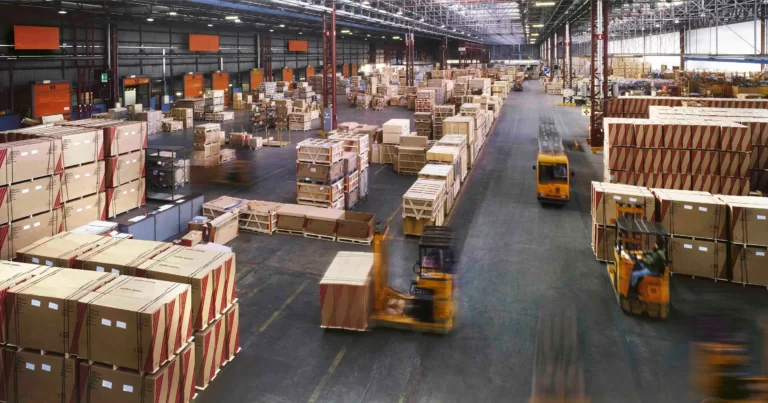Realside Property has launched another property fund via its investment management platform Ovest Industrial, following the success of its initial fund.
Investment manager Ovest Industrial is a joint venture between Perth and Sydney-based Realside Property and Perth private family business Hero Properties, led by Julie Drago.
The latest fund, Ovest 2, will acquire vacant land zoned for industrial development and older-style industrial buildings that can be refurbished, across major capital cities.
It will target an initial return rate of 14 per cent and an average yield of 8.5 per cent per annum over five years.
Ovest 1, launched in May, has fully deployed about $60 million raised across six industrial properties in WA, with an expected end value of about $150 million.
Realside is looking to raise a similar amount, that is, $60 million, through Ovest 2.
Ovest director Mark Vonic said the timing of Ovest 1 and now Ovest 2 capitalised on the continued strong tenant demand for high-quality industrial property in major capital cities.
“We believe that the potential development upside from a build-to-own strategy offers significant appeal over acquiring industrial grade properties given the current climate of compressed cap rates,” he said.
Ovest Industrial chief executive Julie Drago said the investment group continued to see attractive opportunities in the market.
“We are pleased to be able to offer investors an opportunity to participate in our vision of developing high-quality industrial properties to own for the long term,” she said.
Supply constraints are putting pressure on an increasingly active WA industrial property market.
Demand for industrial space in Perth is growing as the state’s economic fortunes continue to strengthen, resulting in increased competition for industrial properties.
A recent JLL report into Perth’s industrial and logistics market found that space in Perth’s industrial facilities was being taken up at its fastest rate since 2013.
And CBRE figures released this week show that Western Australia had the biggest reduction in vacancy rates in its industrial and logistics properties in the past six months, from 4.3 per cent in the first half of the year to 1.8 per cent in the current half.
Investor yields are at historic lows across the country, with sales in WA reported at close to 4 per cent. Given figures like these are typically seen in eastern states markets, this represents a strong appetite for industrial land.
CBRE estimated about $50 billion worth of capital is waiting to be deployed in the national industrial market, with about $4.5 billion worth of transactions occurring annually.
The acquisition by Dexus of the industrial land surrounding Jandakot Airport for $1.1 billion in September this year pushed investment in WA industrial real estate to record levels.
Dexus also purchased the operating airport for $200 million dollars.
Market capitalisation of Perth’s industrial and logistics sector has grown significantly since 2019, and that trajectory is expected to continue.
The report’s author, JLL director WA research Ronak Bhimjiani, said Perth needed an additional 2.4 million square metres of industrial space during the next decade to keep up with burgeoning demand.
This is a 31 per cent increase on current levels, and Mr Bhimjiani said growth was not yet at this rate.
The state’s peak planning body, DevelopmentWA, is tasked with finding new supplies of industrial land to meet this expected surge in demand.
But challenges facing the construction sector and zoning constraints mean it could be an uphill battle.
Demand for industrial space in Perth is growing as the state’s economic fortunes continue to strengthen, resulting in increased competition for industrial properties.
A recent JLL report into Perth’s industrial and logistics market found that space in Perth’s industrial facilities was being taken up at its fastest rate since 2013.
And CBRE figures released this week show that Western Australia had the biggest reduction in vacancy rates in its industrial and logistics properties in the past six months, from 4.3 per cent in the first half of the year to 1.8 per cent in the current half.
Investor yields are at historic lows across the country, with sales in WA reported at close to 4 per cent. Given figures like these are typically seen in eastern states markets, this represents a strong appetite for industrial land.
CBRE estimated about $50 billion worth of capital is waiting to be deployed in the national industrial market, with about $4.5 billion worth of transactions occurring annually.
The acquisition by Dexus of the industrial land surrounding Jandakot Airport for $1.1 billion in September this year pushed investment in WA industrial real estate to record levels.
Dexus also purchased the operating airport for $200 million dollars.
Market capitalisation of Perth’s industrial and logistics sector has grown significantly since 2019, and that trajectory is expected to continue.
The report’s author, JLL director WA research Ronak Bhimjiani, said Perth needed an additional 2.4 million square metres of industrial space during the next decade to keep up with burgeoning demand.
This is a 31 per cent increase on current levels, and Mr Bhimjiani said growth was not yet at this rate.
The state’s peak planning body, DevelopmentWA, is tasked with finding new supplies of industrial land to meet this expected surge in demand.
But challenges facing the construction sector and zoning constraints mean it could be an uphill battle.
Demand
WA’s strong resources sector, growth in e-commerce, and high activity in manufacturing and construction have pushed demand for warehouse and logistics space to unprecedented highs.
DevelopmentWA chief executive Frank Marra said industrial land supply was key to WA’s economic recovery, prompting its Industrial Lands Authority to bring forward some of its land releases.
DevelopmentWA’s recent release of a 95-hectare industrial site at Orion, near Henderson, has attracted strong interest from market players, including Hero Properties’ Julie Drago.
Ms Drago, who launched a second Ovest industrial joint venture fund with Sydney’s Realside Property this year, said tenant appetite was strong.
“We’ve got tenants that want developments now, but aren’t going to get land access until the third quarter of next year,” she said.
Mr Marra said strength in the state’s transport, postal, warehousing, and wholesale retail sectors was driving demand for industrial land, as well as renewed manufacturing activity.
“The resurgence in local food processing and government stimulus in the housing and infrastructure sector is driving demand in the manufacturing and construction sectors,” he said.
Mr Bhimjiani said businesses across the entire WA economy had increased their economic output by 4.3 per cent in the 12 months to June 2021.
“This was the fastest growth rate since 2012 and the strongest growth of any state on an annual basis,” he said.
Transport, postal, and warehousing consume a majority of WA’s industrial land, with their occupation of industrial and logistics space surging from 38 per cent to 57 per cent in the past decade.
Manufacturers’ uptake has expanded from 13 per cent to 24 per cent in the same period, while other uses – such as professional services, wholesale trade, public administration and mining – fell from 49 per cent to 19 per cent.
Mr Bhimjiani said increased activity in the state’s logistics sector was largely driven by an increase in demand for e-commerce.
“The rapid rise in the e-commerce sector is coming from a structural shift in how we are shopping, which has become an even more dominant force during the pandemic, because a majority of customers have been forced to shop online,” he said.
The e-commerce penetration rate in WA, which is the amount people are spending online as a proportion of how much they spend across the whole retail sector, has gone from 9.6 per cent in 2020 to 13.3 per cent in 2021.
Based on current demand levels, that is expected to grow to 20 per cent by 2025.
Mr Bhimjiani anticipates WA’s e-commerce sector will require an additional 800,000sqm of industrial space by 2025.
This is on top of the additional 1.6 million square metres that will be needed to match population growth in WA over the next decade, he added.
Growth constraints
While DevelopmentWA has progressed industrial land sales this year, much of its effort has been focused on regional areas including Port Hedland, Karratha, and Pinjarra.
These estates have attracted strong demand, but many of the state’s industrial property players are looking for more land near key metropolitan freight corridors.
DevelopmentWA’s recent metropolitan assets include Meridan Park near Clarkson, Forrestdale Business Park, and the Latitude 32 Industry Zone near the planned Kwinana Port.
Ms Drago said it was becoming increasingly difficult for developers to find land where logistics companies recognised the most demand.
“There hasn’t been land in the areas it needed to be in, in the core of Perth – Kewdale, Welshpool – those core areas where logistics makes sense,” she said.
“One of the challenges we have been facing in the last couple of years is trying to find adequate sites.
“We’ve been looking at infill targets, trying to pick up two- to four-hectare sites in those areas …but the bigger sites, the five to seven hectares, you’ve got to go to the fringe.”
Hero Properties and Ovest own 240,000sqm of industrial property across Perth, including 90,000sqm under development, and Ovest has recently acquired 7ha in Adelaide, its first industrial assets outside of WA.
The company is also in due diligence on a further 10ha of Adelaide industrial land that will likely be acquired on a short leaseback.
Ben Lisle is a founding director of Hesperia Property, which has delivered 2.8 million square metres of industrial land throughout six estates in the Perth metropolitan area.
Mr Lisle agreed that it was becoming increasingly difficult to develop industrial land in areas to service the logistics boom.
“The easily developable land has been largely absorbed and we are now in a situation where the balance of land is very fragmented,” he said.
“When we look at the market, there are only a few areas that have the capacity to provide any meaningful land supply.”
Hesperia’s latest large-scale industrial estate – Roe Highway Logistics Park – being developed in partnership with Andrew Forrest’s Tattarang, is expected to be complete within the next 12 months.
The 72ha site will be occupied by logistics and manufacturing businesses and is about 90 per cent committed.
“Demand has been very strong, it’s been absorbed very quickly and we’ve had strong enquiry,” Mr Lisle said.
Mr Lisle estimated four to five years’ of undeveloped industrial land supply remained within Perth’s logistics core.
He said Hesperia would continue to seek out opportunities to develop parcels of metropolitan land, but that was becoming increasingly difficult.
Ms Drago said that, on top of land availability, constraints around the construction sector brought about by COVID-19 were holding industrial developers back.
“We’ve got delays in materials, delays in the construction side of the business, we’ve got issues finding labourers; getting tradesman to work in Perth at the moment is very difficult,” she said.
“Then we’ve got rising material costs [and] transport costs.”
Hero Properties’ Forrestfield industrial development has been pushed back due to delays in securing materials including steel, which has also escalated in price by about 50 per cent.
Investor activity
High demand for industrial assets among institutional investors is reflected through the downward pressure on yields during 2021, and analysts predict this will continue into next year.
CBRE head of industrial and logstics research Australia, Sass J-Baleh, said there was a huge imbalance in the capital appetite for the sector and the amount of stock available.
“That is what’s really driving down yields,” she said.
“There has been a lot of demand for industrial space, particularly accelerated by COVID, so there is the security of income from tenants.
“A lot of investors are chasing logistics and industrial asset classes, and a lot of the thematics driving the demand for industrial logistics are long term.”
In addition, land values and rental returns have increased during COVID-19 after a long period of stagnation in WA.
Ms J-Baleh said this was likely to result in even stronger economic performance of industrial assets.
“We forecast over the next 12 months that yields are going to compress even further, so the value today is still quite good for investors,” she said.
A recent NAB Quarterly Australian Commercial Property survey indicated buyer sentiment in Australian industrial real estate was up 64 per cent on the previous quarter.
Speaking at a recent Property Council of Australia lunch, NAB director client coverage corporate and institutional, Benjamin Hartley, said there were high volumes of transactions in the sector, with much of that investment in WA from new players.
Real estate investment trust Dexus’s recent Jandakot purchase marked its first foray into WA logistics infrastructure.
Dexus chief investment officer Ross Du Vernet said the deal was a result of years of searching for scalable opportunities in the logistics and warehousing space in WA.
“The Jandakot Airport deal provided a significant stabilised portfolio of real estate and developable land, which plays to our strengths when it comes to our strong development capabilities,” he said.
“As part of our acquisition strategy, we are focused on gateway locations, and Jandakot has strong first, middle and last mile attributes that support this.
“We are seeing growing demand from our customers and investors to have access to high-quality assets at a national scale, and while most of our customers are based in the eastern states, our customer-centric approach remains the same.”
Future drivers
Planning constraints around industrial areas include a need for buffer zones around residential areas, Aboriginal heritage, transport network limitations, and development approval processes.
Mr Lisle said the process could be made smoother for proponents by identifying key strategic industrial land opportunities and streamlining the approvals process.
“It is important to identify and elevate the importance of the remaining scale industrial land opportunities within the metropolitan area,” he said.
“If you start with a piece of rural land there may be more than 40 separate referrals required to move through the MRS, scheme, structure plan and subdivision processes.
“Finding ways to streamline that process and better coordinate across the agencies is really important.”
Property Council of Australia WA executive director Sandra Brewer said ensuring adequate supply of available industrial stock required a planning framework to identify and protect industrial land in key locations across the state.
“Planning frameworks for industrial land need to accommodate future development trends, such as last-mile logistics and the possibility of vertical warehousing in areas that are close to primary transport links, such as the eastern corridor,” she said.
Ms Brewer added that the development community was eagerly awaiting the review of the Perth and Peel @ 3.5 million frameworks, due this year.
“It is hoped the review will provide better guidance around where industrial development is needed and avoid instances where local government processes lead to the inconsistent delivery of industrial lands,” she said.
The Property Council’s Planning to Deliver report, released earlier this year, contained a range of recommendations aimed at ensuring planning systems could adequately accommodate the growing demand for industrial land.
“One proposal included the creation of a state referral agency to facilitate a streamlined planning process for major and strategic projects, ensuring existing referral agencies collaborate at the early stages of the development cycle to streamline planning approvals,” Ms Brewer said.
“Land-use planning, combined with infrastructure planning and delivery, are the key ingredients for a reliable supply of industrial premises.”




